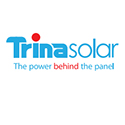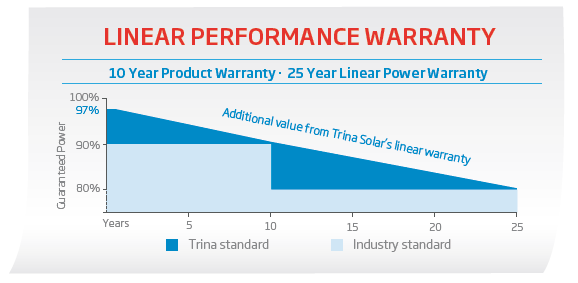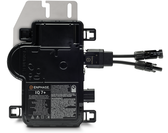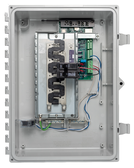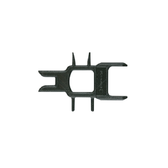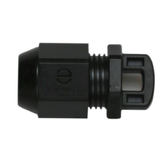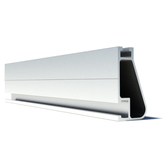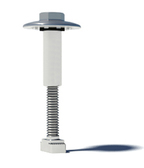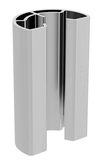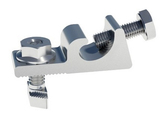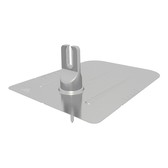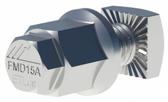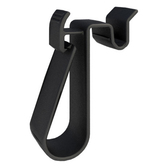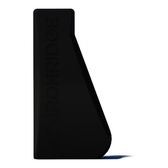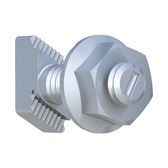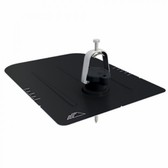 Loading... Please wait...
Loading... Please wait...Products
- Solar Panels
- Solar Panel Kits
- Solar Generators
- Inverters
- Inverter Monitoring
- Inverter Accessories
- Balance of Systems
- Racking and Mounting
- Rails
- Flashings
- Splice Kits
- Stopper Sleeves
- Conduit Mounts
- Attachments
- Brace Assembly
- Base Mount
- Brackets
- Bolts
- Clamps
- Caps
- L-Feet
- Washers
- Skirt
- Lugs
- Tilt Legs
- Hooks
- Stand-Offs
- Ballast Bay
- Top of Pole Mount
- Side of Pole Mount
- Flush Mount Kits
- Ground Mount Kits
- Roof Mount Kits
- Hardware Packages
- Wire Management
- Batteries
- Battery Accessories
- Charge Controllers
- Tools and Supplies
- View All Products
Solaris Blog - Trina Solar Panel Review
Trina Solar Panels: The Complete Review
Posted by Brandi Casey on 28th Sep 2019

Trina Solar is a leading provider of quality, value based solar panel solutions. Year to date, Trina Solar has provided more than 40 GW of solar panels worldwide. In 2018, the company ranked 17th on the 2018 Global Top 500 New Energy Enterprises. Trina sets high internal benchmarks to ensure quality, efficiency, low cost and meets or exceeds international industry standards.
One of the measures Trina utilizes to ensure the reliability of their panels is tight quality control that starts from solar cell crystallization to system deployment. The company also utilizes their construction and operations teams to offer hands on expertise in PV project development.
Trina Solar panels are considered valued based solar modules, when compared to mid-range panels like Canadian Solar and Hanwha Q Cells, and premium modules such as those from LG Solar and Panasonic. Trina’s overall efficiency ratings come in slightly below or match the efficiency ratings of mid-range modules depending on what wattage and series is being compared. Likewise, their warranty period meets industry standards in both product and linear performance.
In this complete review of Trina solar panels, we will be looking into the following:
- Specifications and Pricing
- Average Cost per Watt Comparison
- Module and Cell Technology
- Warranty Period
- Trina Solar Panel Kit Potential ROI
- And Solaris Recommendations
See Here: Trina Solar Panels for Sale
Specifications and Pricing
Trina Solar currently offers the Honey Plus and Tallmax Plus PV module series. Like many solar offerings, their line is currently made up of monocrystalline solar cells. The quality of Trina’s solar panels starts in the manufacturing of both the solar cells and complete solar modules. With strict guidelines for manufacturing and equipment, Trina’s internal testing standards are often stricter than industry testing standards.
In addition, Trina Solar offers customer’s support from installation to satisfaction, and have devoted an entire department to feedback and claims with their Consumer Quality Engineering (CQE) team. If necessary, the company also offers inspection services which may be necessary in large scale commercial system or with strict housing authorities for residential arrays.
TSM-300-DD05A.05(II) |
TSM-310-DD05A.05(II) |
TSM-375-DE14A(II) |
|
| Watts: | 300 | 310 | 375 |
| Series: | Honey Plus | Honey Plus | Tallmax Plus |
| Pricing: |
See Price Here |
See Price Here |
See Price Here |
| Efficiency: | 18.30% | 18.90% | 19.30% |
| Dimensions: | 64.96 x 39.06 x 1.38 Inches | 64.96 x 39.06 x 1.38 Inches | 77.17 x 39.05 x 1.57 Inches |
| Weight: | 41.00 lbs | 41.00 lbs | 57.32 lbs |
| Cells: | 60x Mono Cells | 60x Mono Cells | 72x Mono Cells |
| Isc: | 9.77 Amps | 9.94 Amps | 9.88 Amps |
| Voc: | 39.80 Volts | 40.20 Volts | 48.50 Volts |
| Imp: | 9.08 Amps | 9.37 Amps | 9.37 Amps |
| Vmp: | 32.60 Volts | 33.20 Volts | 40.00 Volts |
| Docs: |
Specs Warranty |
Specs Warranty |
Specs Warranty |
Average Cost per Watt Comparison
On average, Trina Solar’s modules start at $0.62/watt, this price point puts them below the mid range cost Canadian Solar module, which averages $0.68/watt. This figure comes well under premium modules costs such as those that are incurred from panel manufacturers like LG and Panasonic ($0.95/watt +).
Trina solar panel’s average efficiency rate of 18.83% is on par with Canadian Solar (18.73%) and is less than Panasonic at 19.99%. Trina modules will save on initial costs of the system and have an 80.7% promise at the end of their 25 year linear performance warranty period. This means that you can expect your system to perform a little over 80% of its nameplate value. With Panasonic, the modules retain a little over 90% of their nameplate power, this is important to note when sizing your system to 100% energy coverage - and should figure into your overall cost for the system.
| Manufacturer | Average Cost | Average Efficiency | Warranty |
| Trina Solar | $0.62/watt | 18.83% |
10-yr Product | 25-yr Performance |
| Canadian Solar | $0.68/watt | 18.73% | 10-yr Product | 25-yr Performance |
| Mission Solar | $0.68/watt | 18.65% | 10-yr Product | 25-yr Performance |
| Panasonic | $0.95/watt | 19.99% | 25-yr Product | 25-yr Performance |
Module and Cell Technology
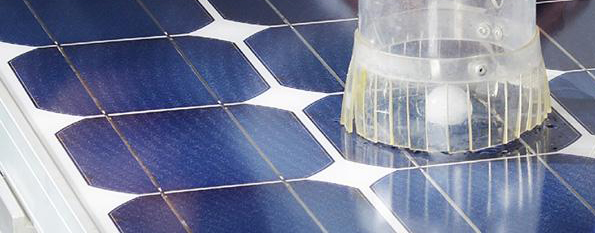 Trina Solar utilizes p-type solar cells in both their monocrystalline and polycrystalline solar panels and recently introduced n-type solar technology into their i-TOPCon solar cells in May of 2019. Their p-type cell technology yields above industry standard efficiency results, while their n-type takes advantage of the more energy efficient technology to be relatively on par with their competitors.
Trina Solar utilizes p-type solar cells in both their monocrystalline and polycrystalline solar panels and recently introduced n-type solar technology into their i-TOPCon solar cells in May of 2019. Their p-type cell technology yields above industry standard efficiency results, while their n-type takes advantage of the more energy efficient technology to be relatively on par with their competitors.
In terms of research and development, Trina Solar is dedicated to always improving upon and expanding their existing solar technology. The State Key Laboratory of PV Science and Technology acts as one of Trina’s partners in their technological endeavors. From cell to module design, the solar company is dedicated to improving both the underlying technology and manufacturing processes in order to deliver end consumers with highly efficient and affordable solar panels.
Trina Solar’s module structure ensures it will stand up against real world conditions such as hail and high wind speeds. The materials used in the modules are built to stand up against corrosion and are recommended for areas with high salt content in the air. In addition, the module glass, cell and backsheet technology enhances the modules low irradiance performance (such as cloudy days and times of the day with non-peak sun hours.
See Here: Solar Panel Performance: Clouds, Rain and Snow
Warranty Period
Trina Solar has an industry standard period of 10 year product and 25 year linear performance warranties. A period matched by Canadian Solar, Hanwha Q Cells and other mid range competitors. The product warranty is less than LG and Panasonic, which both offer 25 year product and performance warranties.
The manufacturer's panels promise 80.7% output at 25 year benchmark, a figure matched by Canadian Solar and beat by LG and Panasonic. In terms of day to day use of the panels, system owners are unlikely to see much difference between the panels. However, over the long term this rating may give LG and Panasonic an edge in terms of energy output. When planning a system on a budget, both Trina’s solar panels and degradation rate can meet and exceed energy needs with proper system sizing and planning for degradation and future energy expectancy.
See Here: Trina Solar Warranty Statement
Trina Solar Panel Kit Potential ROI
In order to gain a better understanding of Trina’s potential ROI period, we went ahead and put together a 9kW grid-tied, roof mounted solar system.
This system includes: Trina Solar 375w solar panels, Enphase Energy IQ7PLUS microinverters along with monitoring and accessories, and complete IronRidge racking. The racking materials were designed in a 2x12 configuration.
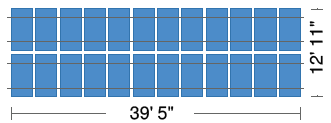
Trina Solar 9kW Grid-Tied Roof Mount System
*Prices reflective of current pricing as of the posting of this article. Click on the item image to check current pricing. Does not include potential taxes and fees which may apply. Prospective system owners will also need a permit plan.
The above system averages to $11,920.92 before possible state level fees and solar energy tax rebates and incentives. This figure brings the system to $1.32/watt for the major components of the system. This is approximately $0.04/watt less than Hanwha Q Cells and $0.11/watt less than Canadian Solar.
The system should be producing approximately 13,500kWh annually and 1,125kWh per month. By taking the average cost of per kilowatt hour in the United States ($0.12/kWh) and multiplying it by the estimated monthly usage, we can determine how much money the system will save per month.
Assuming the system produces 1,125kWh/month, users can expect $135 in energy savings monthly. In order for the system to pay for itself (excluding rebates and incentives, and possible costs of installation) will take approximately 88.30 months, or a 7.36 year ROI period.
Solaris Recommendations
Trina Solar offers a value based, cost effective and highly efficient module. When comparing their modules to mid-range manufactures, they come in at a lower cost and have similar efficiency ratings and warranty periods. The modules are worth considering for from large scale commercial to residential, particularly for those who are on a budget.
Aesthetically speaking, the modules come with an appealing design - they also offer popular options such as black on black, which look great on both roof-top and ground mount systems. Trina’s support is excellent from installation to warranty assistance, and they greatly value the feedback they get on their solar energy technology.
We believe Trina Solar is a great, budget friendly option for a value based solar panel, with specs similar to a mid-range module. Installers or prospective system owners who are interested in looking for the most budget friendly solution, should definately consider Trina Solar panels as a viable option for their system instalation.
See Here: Canadian Solar Panels: The Complete Review


